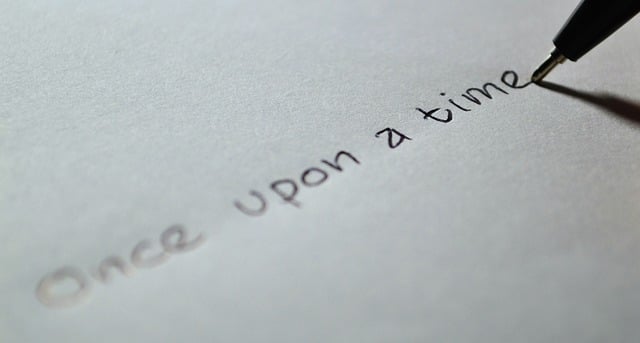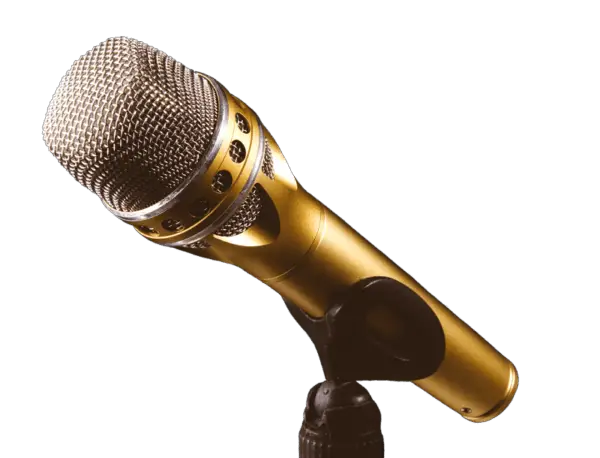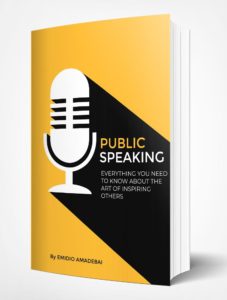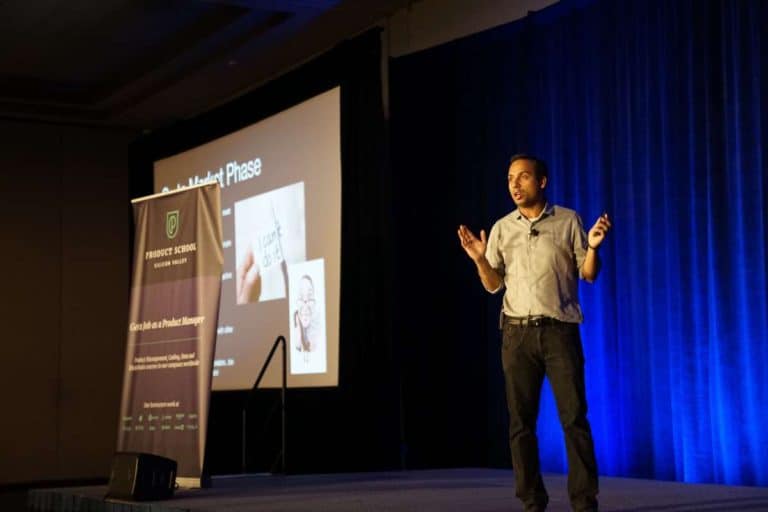Here’s an Excellent Keynote Speech GUIDE: With 2 Great Examples
You’ve probably been asked to give a keynote speech and you are afraid of it. Well, if you’ve never done this before, then there’s no need to panic. Thankfully, you’ve come to the right place. Let’s start with the basics, shall we?
So, what is a keynote speech?
Simply put, a keynote speech is usually given to set the theme of the entire event. It is a speech that is generally delivered by an expert, renowned and well-respected individual, depending on the theme of the event.
Being asked to give a keynote speech in front of a large audience can be a little intimidating. However, it’s the greatest honor to be selected as a keynote speaker. That said, you must deliver the best speech you possibly can.
Now that we’ve covered what a keynote speech is, it’s time to key steps that you should take when preparing a keynote speech.
Related Article: 7 Basic Elements of Public Speaking
How to prepare a keynote speech
Keynote speeches are very important. With that in mind, it’s one of the best opportunities for you and your business. Therefore, if you’ve been asked to be the keynote speaker, take advantage of such an opportunity. But, first, you will have to prepare your speech:
1. Find out the theme for the day
For any first-timer, you will probably be given the theme for the day by the event organizer. But if you are an experienced speaker, I’m sure everyone will applaud anything you say. All the same, both scenarios still require you to plan and organize your thoughts for your speech.
Basically, there are three main types of speeches. They include motivational, educational, and entertaining speeches. Start by deciding the type of speech you’d like to go with. But whatever your choice will be, remember that you are going up there to add value to your audience and not brag about your achievements and who you are. Therefore, if you are not going to motivate, educate, or even entertain your audience, then there’s no reason for you do go up there. Don’t do it, period!
Based on the theme, you can select the core message that you’d like to pass across to your audience. Always make sure that your speech is clear, passionate, and has some knowledge that any member of the audience could take home.
2. Outline your presentation
Before jumping into designing your presentation, the first step is to ensure you have a clear outline of your speech. The structure is vital to the design of your keynote speech and also to your delivery of it all.
Sadly, most speakers always skip this part. And, it’s usually visible in their delivery and line of thought. The best way to handle this situation is by creating a sort of blueprint for your presentation which will include:
- Highlight some of the key structural elements, for instance, introduction, conclusion, or even stories.
- Highlight your key element in the presentation. What do I mean? Start by answering the question-what messages are you using to support your logical key point?
- Link all the elements together in a systematic sequence
- Also, try mapping out the transition from one key point to the next and ensure that it’s flawless.
3. Now fill each section
Following your outline, use keywords to convey a clear message to your audience. This will also help in keeping the audience’s attention. On top of that, it will ensure you have a great flow of thoughts in your presentation.
Write down the topic you’d like to present. Then go ahead and add principal keywords. Afterwards, write what you derive from each keyword. Thankfully, the structure of your keynote speech will give you a set of new keywords to follow.
Make sure that you are brief and clear when filling each section. More importantly, don’t crowd up your content. You will also need to ensure you have most of the keywords in your mind. This will save you the time you use to check on your keynote speech instead of maintaining eye contact with the crowd.
4. Make the work visually attractive
Without a doubt, you should always ensure that your work has some visual ideas that would be easy to interpret. Add graphs or charts where necessary, but only where necessary. Too much of anything will lead to you losing the attention of your audience.
5. Add personal stories
Anecdotes and stories will assist you in illustrating your ideas to the audience. On top of that, it’s the best way to show your research. With stories, you should be able to capture the attention of your audience. Additionally, your audience will be emotionally invested which will differentiate you from nervous and inexperienced speakers.
Play a game, add a question, or simply just maintain eye contact with your audience. This will help you gain their full attention throughout your speech.
6. Finally, rehearse
There’s no shortcut in this section. For you to present a killer speech in front of your audience without sounding nervous is through research. By rehearsing your speech several times, you can understand what it means to your audience and also see places where you can improve your speech.
Actually, you can even record yourself while giving your keynote speech. That way, you will be able to work on your body language and speaking rate. If you have stage freight, this is a good way to avoid the effects of it.
Now that you already know how to get ready for your speech, let’s take on how to open a keynote speech.
The next points of discussion are: how to open a keynote speech, how long should a keynote speech be, and some great examples of keynote speeches. Before digging into that, let me add below some of the top related and interesting articles that can add to what you’re learning from this one. If any of the titles picks your interest, please click and open in a new tab, so you can check them out later. Enjoy!
-
8 THINGS YOU CAN DO TO ACE ANY JOB INTERVIEW

The happiness when receiving a call marking the job interview gives rise to endless anxiety. After all, it’s only a few minutes to prove your worth, impress the recruiter and seize the opportunity. However, to do well at the job interview, you need to think about what you will say, how you will present yourself,…
-
An Easy Guide to All 15 Types of Speech

We keep learning that there are three types of speeches, informative speeches, persuasive speeches and special occasion speeches. However, I believe and know that there are many more such as debates, motivational speeches, forensic speeches, impromptu speeches, eulogy, and so on. Here’s a growing list of over 13 types of speech and tips on how…
How to open a keynote speech?
I bet you are probably worried about your opening lines in your keynote speech, right? Well, first thing’s first, don’t be in a rush to speak. Before you open your mouth, the attention is usually high at this moment. Therefore, once you arrive up there, pause for a moment. To the audience, you will appear like you are trying to be confident and collected, so use that moment.
The audience will lean in to try and hear your first few words. And at that moment, the audience will form their first impression of you with the first words you utter. An example of the first opening words include, ‘um, good evening everyone….I’m happy to be here in front of you. I will like to thank you so-so-so-so much…..’
Trust me if you start your speech with these words, the audience will feel like you are repeating words that will sound the same as the conversations they have been trying to avoid.
To get the full attention of your audience, here are some quick tips on your opening statements.
Related Article: 7 Basic Elements of Public Speaking
NEW PUBLIC SPEAKING BOOK LAUNCH!
Before we go into how to open your keynote speech…
I would like to announce that you can get more insightful tips and how-to’s from our recently launched eBook, now available at Barnes & Noble, at $4.99. We tried to pack it with valuable information and price it below $5 to be as inclusive as possible with our pricing. Click below and Get a Copy!
Key tips on the opening statement in your keynote speech
There’s no shortcut here. Just jump into the speech with something interesting and unexpected. There’s an infinite number of possibilities for how you can start your keynote speech. Here are a few that you can check out:
- Name someone central to your message
- Use a provocative question
- Use a short, pithy quote
- Start with a personal association
- Tell an Interesting and relatable Story
- Paint a picture with your words, and so on…

How long should a keynote speech be?
Usually, the maximum length of the keynote speech depends majorly on the skill of the speaker. Therefore, the minimum length of the keynote speech depends on how long the speaker will need to make an impact on the audience.
You will know when the keynote does not last long enough when the message said by the speaker doesn’t have a deep effect on the audience. Additionally, the length of the keynote speech depends on the time allocated to the event.
Examples of Excellent Keynote Speeches
If you follow the instructions above, you won’t even need examples to sharpen your skills. However, here are some of the examples you can check out to give you a deeper understanding of keynote speeches
With these two examples, you will be able to draft your speech in no time.
To wrap it all up…
A keynote speech is an incredible way to get over public speaking and be able to introduce yourself to the audience. It doesn’t matter the number of people in the gathering. Always remember to count every opportunity that comes your way.
Also, a great speech is not one that strings different elements together-no siree! A great speech is one that weaves them in the minds of the audience in such a way that they are not able to tell the difference between the segments. The speech shouldn’t be repetitive or random. It should be something that you sat down and constructed to perfection.
Give the audience something that they can remember you by. A speech that will make them concentrate on the best course of action. Someone once told me that, ‘words can change the world’ and I believe it. Now, this is your opportunity to change the world.
REFERENCES & FURTHER READING
https://business.tutsplus.com/tutorials/what-is-a-keynote-speech–cms-31420
https://www.thebalancesmb.com/how-to-write-a-keynote-speech-2295879










